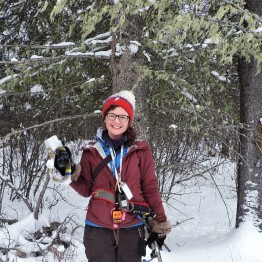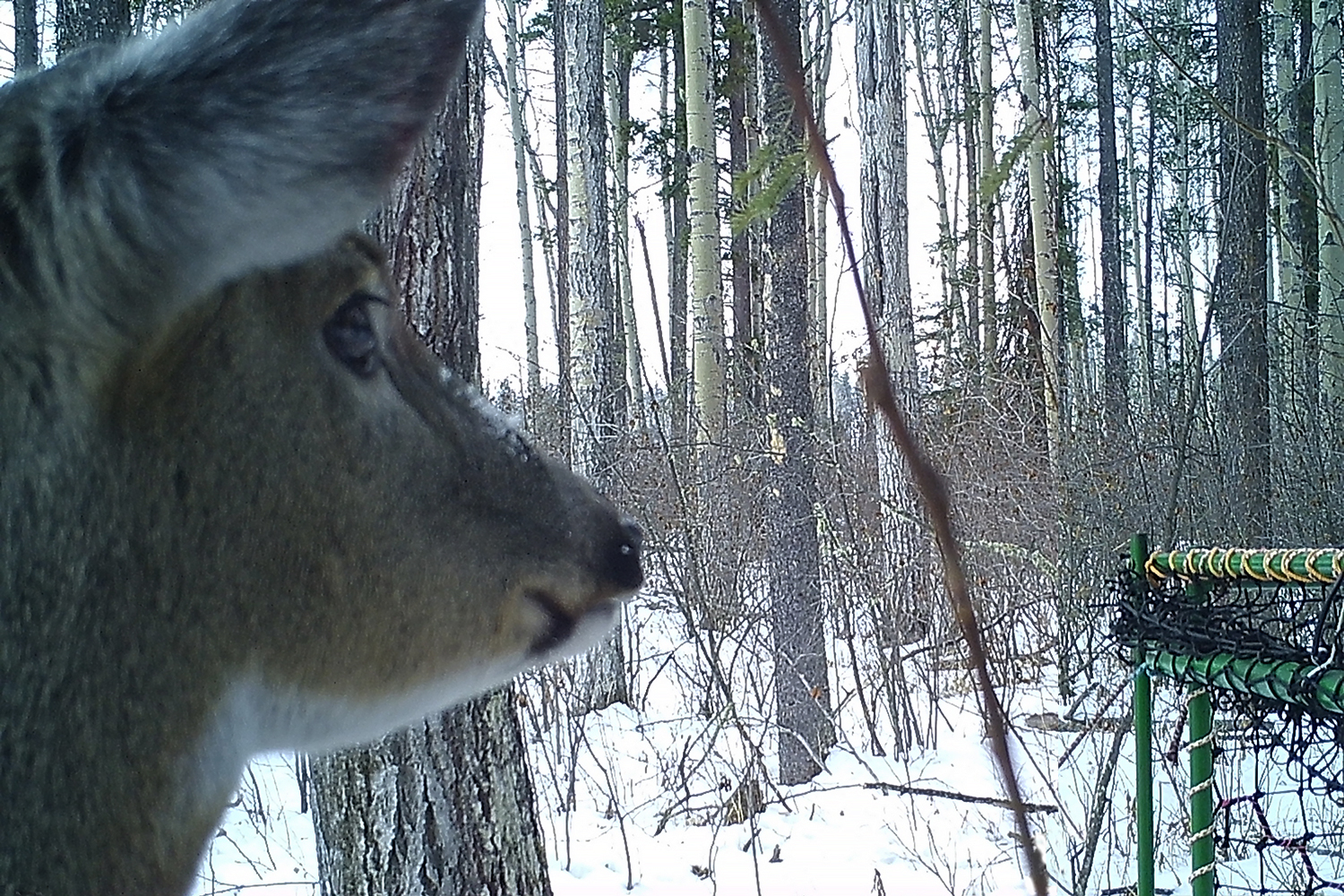
By Siobhan Darlington
This winter fRI Research’s Caribou Program was catching white-tailed deer near the Little Smoky and A la Peche Caribou ranges as part of the Deer and Cutblocks Project. We fit them with collars that emit GPS locations every hour. These points allow us to track their movements for up to two years—but what happens when those points stop moving unexpectedly early?
We become death scene investigators.
White-tailed deer in this industrially-active region of the boreal forest share the landscape with people and predators, including grey wolves, grizzly bears, black bears, coyotes, and cougars. When a deer stops moving for four hours, the radio-collar sends us an email alert and starts emiting a VHF mortality signal. We use the last GPS signal to get close, and then follow the VHF pings to pinpoint it on foot.
There are many possible reasons for a mortality signal. The collar could have fallen off, the deer might be bedded down and simply isn’t interested in moving, or in fact, a carcass may or may not have predators defending it. One precaution we take: if the mortality signal is received when bears are awake, it’s best to wait a week before making a visit. But for all mortalities, we bring our bear spray, emergency beacon, GPS device, VHF receiver and antennae, and one certified member may carry a shotgun for safety. It’s a lot to carry when bush-whacking through deep snow! At the site, we gather all the photos and notes we can, take samples of the carcass (if anything is left), and find the collar and to be cleaned and reused.
This winter we visited four mortality signals. One was just a lazy but alive deer and the other three were predation events. Try to guess who the assailant was for two very different scenes we visited this winter! (Click to expand or read on for clues.)
Some of the main differences between predators that we identified were the tidiness and distribution of remains, and distance from initial attack location.
Both grizzly and black bears will hunt deer neonates in the spring, and sometimes adult deer. Carcasses from bear kills tend to have everted hide, exposed organs in the abdominal cavity, and are partially buried.
Cougars puncture the neck with their teeth to sever the spinal cord, leaving little blood. They then pluck or sheer the hair before tearing into the abdominal cavity. Cougars will also move and cache the carcasses away from the kill site. At one site, we found the head and collar completely intact and covered in snow, debris, and hair.
Wolves left far more traces of their initial attack, scattering a lot of blood and deer hair in a mat over the snow. We found deer remains spread out and up to 40 meters away from the wolf kill sites. The collar was intact and the head and body were gone, with only a forelimb and hind-limb remaining.
Another helpful hint for identifying the perp is searching for tracks in mud or snow. We found fresh cougar tracks on our way back to the truck—and we know they weren’t there when we first arrived because some of them were inside our own footprints!
At the wolf kill sites, we found multiple sets of wolf prints, wolf scat, and even bear scat.
Even with all these clues, it still can be difficult to attribute initial attacks to a specific predator when scavengers have been to the site prior to our investigation.
Of course we hope that all of our collared deer survive the duration of the study, we can still get valuable information on the causes of mortality of white-tailed deer within caribou ranges. We’ll analyze the habitat attributes of predator kill sites to map where deer may be more vulnerable to predators on the landscape. And of course, while they are alive, the data we collect from our collared deer helps us understand how they move around the landscape and where they might overlap with caribou – information that we hope will help with caribou conservation.












